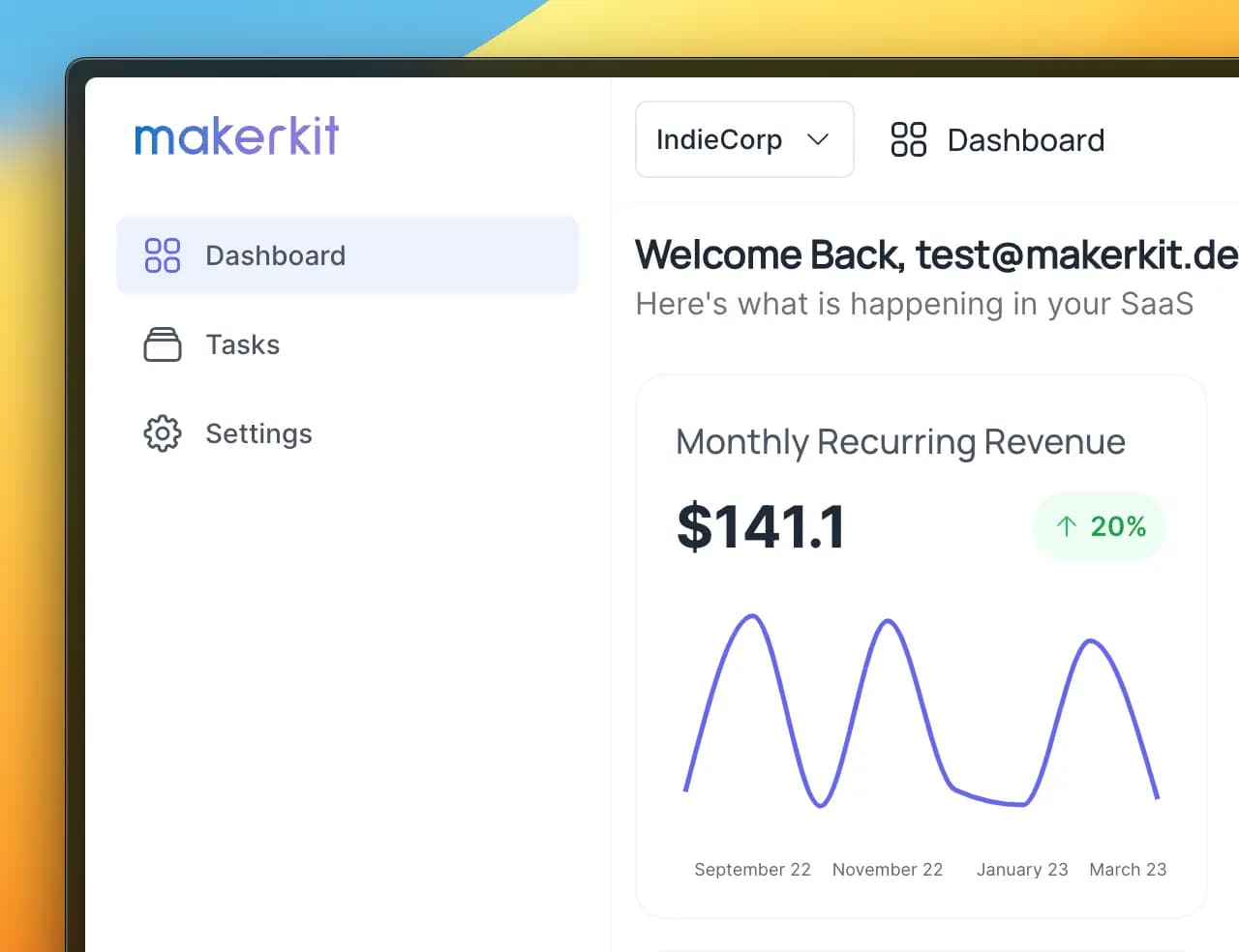Routing | Remix Supabase SaaS Kit
Learn the basics of routing in the Remix Supabase SaaS Boilerplate
It's time to work on our application's value proorder: adding and tracking tasks! This is likely the most exciting part for you because it's where you get to change things and add your SaaS features to the template.
Routing Structure
Before getting started, let's take a look at the default page structure of the boilerplate is the following.
The routing structure below has been updated to using the new Remix v2 convention
├── routes └── $.tsx └── _app.dashboard.tsx └── _app.settings._index.tsx └── _app.settings.organization._index.tsx └── _app.settings.organization.members._index.tsx └── _app.settings.organization.members.invite._index.tsx └── _app.settings.organization.tsx └── _app.settings.profile._index.tsx └── _app.settings.profile.authentication.tsx └── _app.settings.profile.email.tsx └── _app.settings.profile.password.tsx └── _app.settings.profile.tsx └── _app.settings.subscription._index.tsx └── _app.settings.tsx └── _app.tasks.$task.tsx └── _app.tasks._index.tsx └── _app.tsx └── _invite.tsx └── _site._index.tsx └── _site.about.tsx └── _site.faq.tsx └── _site.pricing.tsx └── _site.tsx └── admin._index.tsx └── admin.organizations.$id.members.tsx └── admin.organizations._index.tsx └── admin.tsx └── admin.users.$id.ban.ts └── admin.users.$id.impersonate.tsx └── admin.users.$id.reactivate.ts └── admin.users.$id.tsx └── admin.users._index.tsx └── auth.callback.tsx └── auth.link.tsx └── auth.password-reset.tsx └── auth.sign-in.tsx └── auth.sign-up.tsx └── auth.tsx └── auth.verify.tsx └── healthcheck.ts └── invite.$code.tsx └── onboarding._index.tsx └── resources.organizations.create.ts └── resources.organizations.members.$member.tsx └── resources.organizations.transfer-ownership.ts └── resources.stripe.checkout.tsx └── resources.stripe.portal.ts └── resources.stripe.webhook.tsThe routes are split in the following way:
- The website's pages are placed under the prefix
_site - The auth pages are placed under the prefix
_auth - The internal pages (behind auth) pages are placed under the prefix
_app
Some pages in the "middle" are placed outside _app, such as the Invites page and the Onboarding flow. These require custom handling.
Setting the application's Home Page
By default, the application's home page is /dashboard; every time the user logs in, they're redirected to the page src/routes/_app.dashboard._index.tsx.
You can update the above by setting the application's home page path at configuration.paths.appHome.
Routing
Ok, so we want to add two pages to our application:
Tasks List: A page to list all our tasks
Task Detail: A page specific to the selected task
List Page: we create a page
page.tsx, which is accessible at the path/tasksTask Page: we create a page
$task.tsx, which is accessible at the path/tasks/<taskID>wheretaskIDis a dynamic variable that refers to the actual ID of the task
├── routes └── _app.tasks._index.tsx └── _app.tasks.$task.tsxAdding Functionalities to your application
To add new functionalities to your application (in our case, tasks management), usually, you'd need the following things:
- First, we want to define our data model
- Once we're happy with the data model, we can create our Supabase hooks to write new tasks and then fetch the ones we created
- Then, we import and use our hooks within the components
- Finally, we add the components to the pages
Adding page links to the Navigation Menu
Updating the Top header Navigation
To update the navigation menu, we need to update the NAVIGATION_CONFIG object in src/navigation-config.tsx.
import { Squares2X2Icon, Cog8ToothIcon } from "@heroicons/react/24/outline";const NAVIGATION_CONFIG = { items: [ { label: 'common:dashboardTabLabel', path: configuration.paths.appHome, Icon: ({ className }: { className: string }) => { return <Squares2X2Icon className={className} />; }, }, { label: 'common:settingsTabLabel', path: '/settings', Icon: ({ className }: { className: string }) => { return <Cog8ToothIcon className={className} />; }, }, ],};To add a new link to the header menu, we can add the following item in the NAVIGATION_CONFIG object:
import { Squares2X2Icon } from "@heroicons/react/24/outline";{ label: 'common:tasksTabLabel', path: '/tasks', Icon: ({ className }: { className: string }) => { return <Squares2X2Icon className={className} />; },},The result will be similar to the images below:

You may need to restart your development server to see the changes, and/or refresh the browser's cache for the changes to be visible.